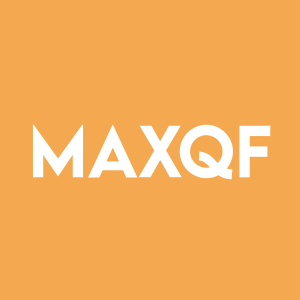Maritime Launch and T-Minus Engineering Announce Plans for Hypersonic Suborbital Launches from Spaceport Nova Scotia
- First North American launch for T-Minus Engineering, expanding Maritime Launch's international partnerships
- Diversification of Spaceport Nova Scotia's capabilities into hypersonic testing
- Established track record of T-Minus with successful launches in multiple European locations
- Turnkey solution offering that handles all launch logistics and payload integration
- Limited payload capacity remaining for the October 2025 launches
- Relatively small payload capacity of 40 kilograms per launch
This mission will represent the next step in advancing Spaceport Nova Scotia's suborbital and hypersonic testing capabilities, as Maritime Launch continues to establish
Maritime Launch and T-Minus Engineering will launch two suborbital vehicles that carry payloads. Operating within
"Our suborbital launch program offers a turnkey solution for clients. With seamless integration of payloads into suborbital missions, our teams will handle all launch logistics, payload integration, and mission execution, allowing clients to concentrate exclusively on their payload objectives," says Stephen Matier, President and CEO, Maritime Launch. "These launches will continue to mature launch heritage at the Spaceport, diversify service offerings, and expand international collaborations with launch vehicle clients."
Based in
"We look forward to bringing our Barracuda platform to Spaceport Nova Scotia," said Mark Uitendaal, Director of T-Minus Engineering. "This launch will demonstrate a fully integrated flight campaign with our Canadian partners and help build momentum for future hypersonic testing programs in
T-Minus will use its flight-proven suborbital vehicles, each configured for specific client applications and capable of delivering payloads to extreme environments. The company's Barracuda rocket is a single-stage, solid-fuel suborbital vehicle that stands approximately 4 metres tall. It features a booster with a diameter of 200 millimetres and a payload compartment measuring 1000 millimetres. Barracuda can carry payloads of up to 40 kilograms to altitudes reaching 120 kilometres.
T-Minus and Maritime Launch's suborbital launch will use a mobile launch vehicle integration building to prepare the two rockets for launch. Together, they will construct a mobile launch platform from the suborbital launch pad at the spaceport. While T-Minus has launched Barracuda many times before, this will be the first time the company has done so in
The T-Minus suborbital flights are slated to be launched from Spaceport Nova Scotia in October.
About Maritime Launch
Maritime Launch Services Inc. (NEO: MAXQ, OTCQB: MAXQF) is a Canadian-owned commercial space company based in
About T-Minus Engineering
Since 2011, T-Minus offers commercial suborbital platforms for scientific research, commercial applications, and defence.
Space is one of the most complex fields, requiring thorough knowledge. T-Minus believes in making space business accessible and more efficient through miniaturization and commercialization. With our products and services, we are dedicated to creating something unique, offering the best solutions and expertise to support your mission.
T-Minus aims to become a world leader in the field of suborbital rockets. We are prepared to tackle any technical challenge and work on inspiring projects that enable our customers to advance technology and conduct cutting-edge science.
Forward Looking Statements
This news release contains "forward-looking statements" within the meaning of applicable securities laws. All statements contained herein that are not clearly historical in nature may constitute forward-looking statements. The forward-looking information and forward-looking statements contained herein include, but are not limited to, statements regarding: entering into binding definitive extension agreements with the holders of the debentures, consideration payable in connection with the extension of the debentures, and regulatory approval of the extension by the Cboe Exchange.
Generally, such forward-looking information or forward-looking statements can be identified by the use of forward-looking terminology such as "plans", "expects" or "does not expect", "is expected", "budget", "scheduled", "estimates", "forecasts", "intends", "anticipates" or "does not anticipate", or "believes", or variations of such words and phrases or may contain statements that certain actions, events or results "may", "could", "would", "might" or "will be taken", "will continue", "will occur" or "will be achieved".
Forward-looking statements in this news release are based on certain assumptions and expected future events, namely: the Company's ability to continue as a going concern; the Company's ability to come to mutually agreeable binding terms in definitive agreements with the holders of the debentures in a timely manner or at all; continued approval of the Company's activities by the relevant governmental and/or regulatory authorities; the Company's ability to finance its operations until the extension can be secured and profitability of the Company can be achieved and sustained.
These statements involve known and unknown risks, uncertainties and other factors, which may cause actual results, performance or achievements to differ materially from those expressed or implied by such statements, including but not limited to: the potential inability of the Company to continue as a going concern; risks associated with potential governmental and/or regulatory action with respect to the Company's operations.
Readers are cautioned that the foregoing list is not exhaustive. Readers are further cautioned not to place undue reliance on forward-looking statements, as there can be no assurance that the plans, intentions or expectations upon which they are placed will occur. Such information, although considered reasonable by management at the time of preparation, may prove to be incorrect and actual results may differ materially from those anticipated.
Forward-looking statements contained in this news release are expressly qualified by this cautionary statement and reflect the Company's expectations as of the date hereof and are subject to change thereafter. The Company undertakes no obligation to update or revise any forward-looking statements, whether as a result of new information, estimates or opinions, future events or results or otherwise or to explain any material difference between subsequent actual events and such forward-looking information, except as required by applicable law.
![]() View original content to download multimedia:https://www.prnewswire.com/news-releases/maritime-launch-and-t-minus-engineering-announce-plans-for-hypersonic-suborbital-launches-from-spaceport-nova-scotia-302471277.html
View original content to download multimedia:https://www.prnewswire.com/news-releases/maritime-launch-and-t-minus-engineering-announce-plans-for-hypersonic-suborbital-launches-from-spaceport-nova-scotia-302471277.html
SOURCE Maritime Launch Services Inc.









